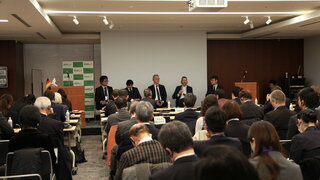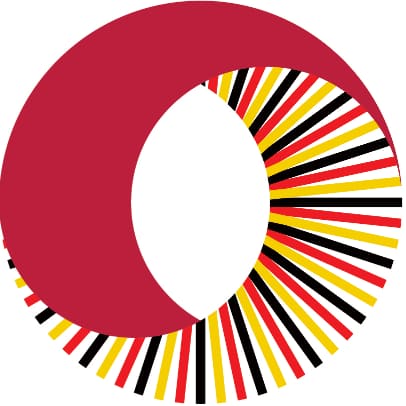13th German-Japanese Environment and Energy Dialogue Forum

The Circular Economy (CE) approach is a crucial key to reduce the consumption of raw materials worldwide and protect the climate. The German-Japanese Energy and Environment Forum (EEDF), the flagship event of the Japanese-German Energy Partnership, which has developed into an important forum for the exchange and intensive discussions of major energy and environment related issues between the political, industrial, and academic leaders of the two countries, addressed the issue of CE in its 13th edition. German and Japanese experts from industry, academia and administration discussed the interface between the "circular economy" and "carbon neutrality" by introducing specific business initiatives and best practices in Germany and in Japan.
The EEDF was opened by Tamotsu Saito (Chairman, NEDO), Dr. Christiane Rohleder (State Secretary, BMUV) and Stefan Wenzel (Parliamentary State Secretary, BMWK). They all underlined the importance of CE for achieving the carbon neutrality objectives of Germany in 2045 and Japan in 2050. Additionally, the potential and relevance of Japanese-German cooperation between stakeholders from politics, civil society and industry on this common challenge was emphasized. Both countries have strong industries, ambitious decarbonization pathways, but only limited domestic resources.
The morning session on 25 January, highlighted ‘Political Strategies for Implementation of Circular Economy for Climate Action’ with insightful presentations on current policy developments in Germany and in Japan by Dr. Bodo Lindscheit (BMUV), Anton Hufnagl (BMWK), Daisuke Nagasaki (METI) and Satoshi Yoshida (MoE Japan). In the following moderated talk by Kazuyuki Imazato (NEDO), the ministries highlighted the great and important cooperation between Germany and Japan on the topic of CE. They underlined that bilateral and international cooperation is key for a successful implementation of G7 and COP28 decisions on CE and efficient emission reductions. They also pointed out that CE offers great possibilities for the faster decarbonization of industry, while simultaneously opening new markets and business models for companies. Furthermore, the ministries stressed that companies leading in the development and implementation of CE approaches should receive benefits as first-movers to support them, e.g. by considering CE-criteria in public procurement.
The second session discussed ‘The Nexus of Climate Action and Circular Economy’. Franziska Erbe (Wuppertal Institut für Klima, Umwelt, Energie gGmbH) outlined the connection of the unsustainable use of finite resources and growing GHG emissions in her introductory presentation on the topic “Resource crisis: necessary decoupling of resource consumption from growth”. In the enclosing panel discussion, panelists highlighted the importance to further quantify the concrete emission reduction potentials of CE to support the uptake of CE measures in different sectors and the enormous opportunities for a cost-efficient decarbonization of industry in Japan and Germany through CE measures. Aylin Shawkat (Agora Industry) highlighted CE as a low-hanging fruit for climate action for emission intensive industries like steel production, with immediate impacts. Klaus Meder (Bosch Japan) pointed out, that while it is partially more-costly for companies to act as first-movers and implement CE approaches for carbon neutrality, companies have the responsibility to contribute towards climate action. Chika Aoki-Suzuki (Institute for Global Environmental Strategies (IGES)), agreed to the great potential for companies to use CE for climate action, despite higher costs in the beginning, which would require support mechanisms to introduce such measures. Takashi Fujii (Toppan Group) stressed the necessity to quantify the CO2-emissions from production and processing in companies, as well as the potential for respective emission reductions through CE-measures.
In the afternoon, Session 3a focused specifically on critical minerals. Kotaro Shimizu (Mitsubishi UFJ Research & Consulting Co.,Ltd.), Sofia Haas (FfE München), Toshiaki Sato (JX Metals Corporation), Felix Müller (German Environment Agency) and Carolin Grüning (adelphi) underlined the strongly increasing demand for critical minerals and other key resources for many technologies and components related to the energy transition. In their presentations and the subsequent discussion, they mapped out how different CE approaches cannot only contribute towards lowering CO2-emissions, but also decrease supply-risks for critical minerals. In light of the ambitious targets for renewable energy deployment in the next years and decades, circular design needs to play a key role for energy transition technologies alongside other circular measures like refuse (e.g. of emission-intensive/hazardous materials), reduce (e.g. waste in production) and reuse (e.g. second-life). Standardization, e.g. of eco-design regulations, additionally offers an important potential topic of exchange between Japan and Germany to avoid incompatible approaches. Session 3b, led by Jana Narita (adelphi) showcased some applied examples for the integration of CE-approaches and energy transition technologies. Miko Iiyama (Bosch Japan) showed the circular components of the new SOFC electrolyzers by Bosch, potentially reducing the carbon footprint of used plantium metals by 95%. Yumi Nasu (Siemens Gamesa) introduced the first fully recyclable wind blade, that is already used in wind parks, promoting the inclusion and recognition of sustainability criteria for offshore wind auctions. Tadashi Hashiguchi (Shinryo Corporation) presented the companies technology for the recycling of PV modules and the high-share of recovery and potential for reuse of recovered raw materials. Last but not least, Takanobu Sawada (Nissan Motor Corporation) explained the approach for Nissan for battery re-use and recycling, already reducing emissions by 85% and striving for carbon-neutrality.
On January 26, Session 4 dealt with the issue of plastic pollution and introduced innovations for recycling, reuse and alternative materials from Germany and Japan, highlighting the potential for circular design and carbon-neutral recycling. The insightful contributions of Axel Borchmann (BMUV), Keita Nigorikawa (GROHE), Ryuichi Iwata (Microwave Chemical Co., Ltd.), Shigeru Yao (Fukuoka University) pointed out various technologies for recycling plastic at hand. In the following discussion, the experts stressed the need for supporting regulation. Some types of plastics are very difficult to process and their use should therefore be better regulated. In addition, the collection of waste materials is key. It must be encouraged and monitored by the regulatory authorities. In this field, Japan can learn from Germany and exchange on this topic should be deepened. Session 5, the last one for this edition of the EEDF, focused on digitization and IT solutions as enablers for a circular economy. Digitization can contribute to CE in manifold ways. The speakers presented different initiatives, digital projects and technology examples for the connection of digitization, resource efficiency and circular economy. Makoto Harita (Harita Metals), Bodo Linscheidt (BMUV), Wei Min Wang (VDI Technologiezentrum GmbH), Seng Chye Koek (Schüco International KG), Christian Tschersich (LAVA (Laboratory for Visionary Architecture), Katsumi Niwa (Nikken Sekkei Ltd) and Yoshihisa Usami (Farmship Inc.) shared their insights and underlined the urgent need to support the digital transformation for CE. Digital solutions can help quantify CO2-emissions throughout the value chain and make reduction potentials visible. Software tools, like digital product passes or IDs, additionally support CE-measures like repair, reuse and recycle.

